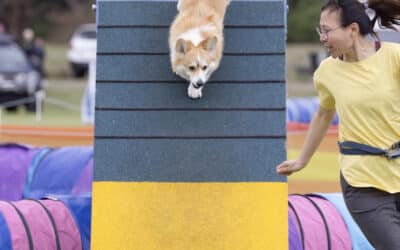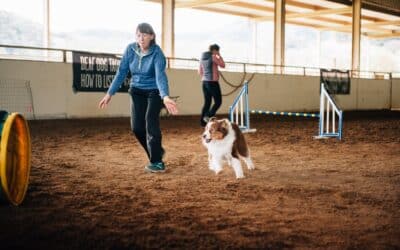Dog agility is by far one of the most rewarding activities you can share with your dog. It combines teamwork, communication, and fun, allowing you to bond with your dog while navigating through various obstacles. However, many handlers encounter common dog agility skills problems that can hinder their performance in competitions.
OneMind Dogs coach Niki Drage talks to us in this in-depth blog post where we will dive deep into these challenges and discuss how to strengthen key skills to overcome dog agility skills problems effectively.
The OneMind Dogs Method: A Foundation for Success
The OneMind Dogs method serves as a powerful foundation for agility training. It was Janita Leinonen who originally came up with the concept when her dog Tekla lost her hearing while competing in agility. Instead of giving up, she began extensively experimenting with different ways of moving and handling Tekla, closely observing how her dog reacted to various cues.
Through this hands-on experience and countless hours of observation, Janita developed techniques based on seven essential elements of body language: movement, position, eyes, chest, feet, hands, and verbal cues. The OneMind Dogs method emphasizes that clear communication fro the dog’s perspective fosters better performance on the agility course. If you master these elements, you can create a more effective training environment and systematically address common dog agility problems.
Common Skill Gaps in Dog Agility
Many agility teams struggle with specific skill gaps that lead to frustrating experiences during training and competition. Often these issues come about because the handler uses bandaid solutions for a skill that the dog is missing, rather than training to fix the skill gap. Learn more about that in our recent FREE webinar by Niki. Here are some of the most common problems that Niki has observed as a coach and experienced competitor in agility.
- Lack of obstacle focus: Dogs may run around jumps or refuse an obstacle
- Bar knocking: Especially when the handler does something potentially distracting
- Contact or weave issues: Dogs might only perform obstacles correctly when the handler is in a specific position or if the handler isn’t running fast etc.
- Motion sensitivity: Dogs may turn back to the handler between obstacles instead of focusing forward, miss weaves or pull off jumps if the handler moves a specific way etc.
- Startline stay: Dogs become ring wise and stay only in training but not in the competition ring
- Inability to pass the handler: Dog runs and the handler’s speed and handler has to run to every obstacle
Band-Aid Solutions
Many handlers resort to quick fixes, or “Band-Aid solutions,” to manage these skill gaps. While these may provide temporary relief, they often lead to more significant issues down the line. For example, handlers might adjust their movements to compensate for a dog’s lack of skill, but this can create new problems in other areas of the course because they are not able to get ahead to an area of the course where to dog really needs direction. They may also choose a less than ideal line for their dog because they are missing a skill that allows them to handle the best line.
Other handlers may shy away from challenging courses or judges, limiting their growth and experience. This avoidance can hinder both the handler’s and the dog’s development. Instead of relying on these short-term fixes, it’s essential to focus on long-term solutions that strengthen the dog’s foundational skills.
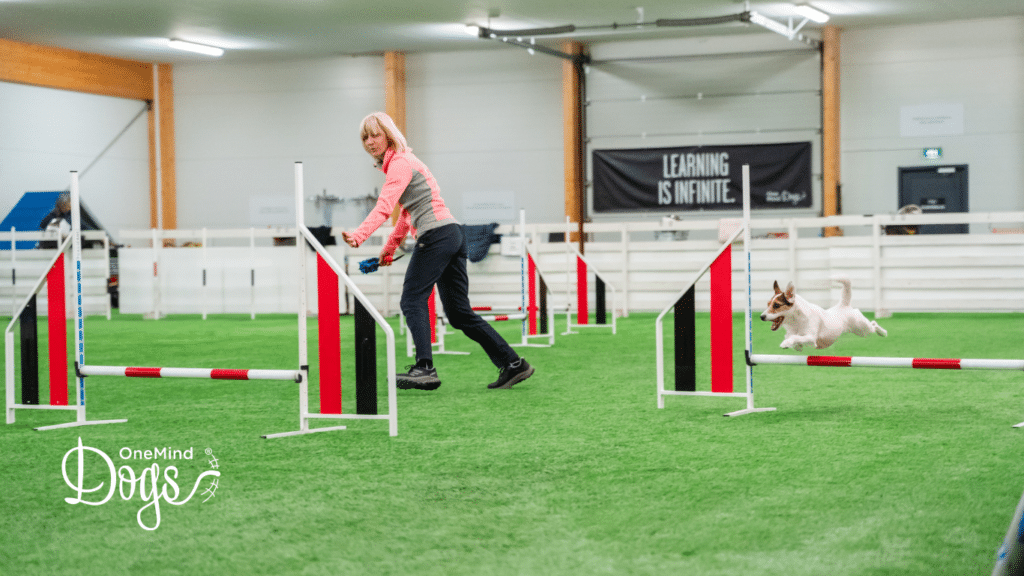
Long-Term Solutions for These Skill Gaps
To effectively address common dog agility problems, handlers must invest time and effort into strengthening their dogs’ foundational skills. Here are some strategies to consider:
Focus on Obstacles
Obstacle focus is one of the most critical skills for any agility team. Teaching your dog to independently perform obstacles allows the handler to concentrate on their own movements and cues. This skill includes:
- Passing the Handler: Dogs should be able to accelerate past the handler, maintaining focus on the obstacle ahead. This skill is essential for navigating courses efficiently and effectively.
- Tolerating Handler Movement: Dogs need to learn how to perform obstacles even when the handler is moving. This is crucial in a fast-paced environment like agility. Handlers should practice moving in different directions while the dog performs obstacles to reinforce this skill.
Impulse Control
Impulse control is vital for maintaining focus and commitment to the course. Dogs should learn to follow the handler’s cues and maintain criteria, even in distracting environments. This can be achieved with clear criteria and constituent behavior on the handler’s side of the team. Trial like you train. You should expect the same criteria in a competition as you do at home.
Troubleshooting and Training Plans
If you’re unsure which skills your dog may be lacking, consider keeping a training diary. Documenting what goes wrong during training and competition can help identify patterns and areas for improvement. Here are some tips:
- Analyze Patterns: Look for recurring issues in your dog’s performance. Are there specific obstacles or situations where they struggle? Identifying these patterns can help you focus your training efforts.
- Consider the Dog’s Perspective: Think about why your dog may not be understanding a cue or obstacle. Are they getting enough information from you? Do they need to strengthen a specific skill? Understanding your dog’s perspective can lead to more effective training strategies.
Regular Skill Maintenance
Just like humans, dogs need regular practice to maintain their skills. This is especially true as they age or if they experience changes in their environment. You need to incorporate foundational skills in your routine. Regularly revisit basic skills, even with advanced dogs. This reinforces their understanding and keeps them engaged.
You may also want to reward specific skills. Instead of only rewarding at the end of a sequence, reward your dog for completing individual skills that they find challenging. This helps them link rewards to specific behaviors and reinforces the importance of each skill.
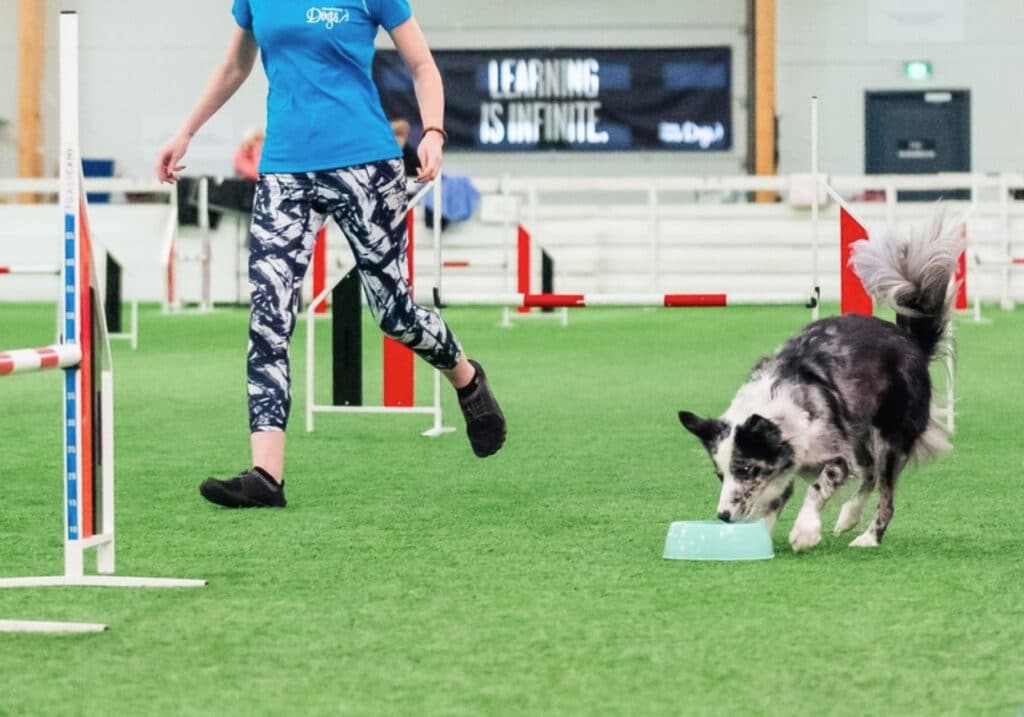
Building Confidence Through Training
Building confidence is essential for both the dog and the handler. When dogs feel confident in their skills, they’re more likely to perform well under pressure. Here are some strategies to foster confidence:
Trust the Training
Once foundational skills are established, handlers should trust their training and allow their dogs to shine. This means giving timely cues and trusting that your dog knows what to do and provide cues at the right moments. This can help improve the flow of the run and reduce confusion for the dog.
Resist the urge to micromanage your dog’s movements. Instead, focus on guiding them through the course. This allows the dog to take ownership of their performance.
Embrace the Challenge
Agility is about growth and learning. Embrace the challenges that come with the sport, as they provide opportunities for improvement. Don’t shy away from difficult courses or situations. Pushing your boundaries and tackling these challenges can lead to significant growth for both you and your dog. Set goals that push you both out of your comfort zones.
Also, learn from mistakes. Mistakes are a natural part of the learning process. Analyze what went wrong and use that knowledge to improve in the future. Discussing challenges with fellow handlers can also provide new insights and strategies.
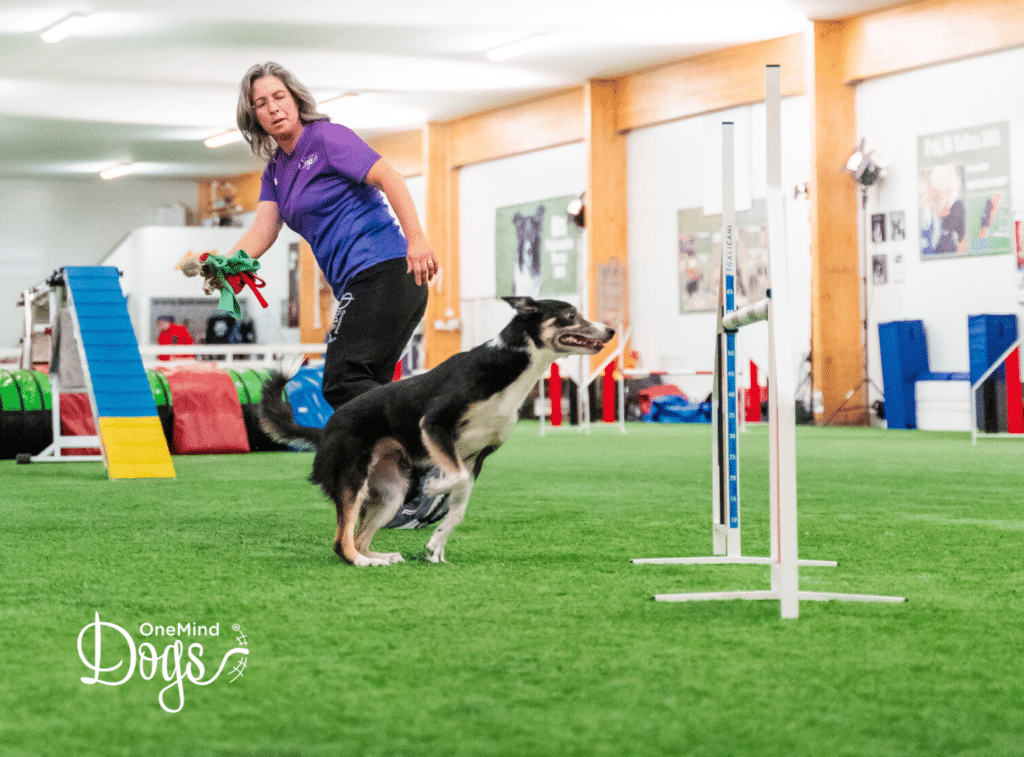
Essential Skills for All Agility Teams
To address common dog agility problems, handlers should focus on developing essential skills that every agility team should possess. These foundational skills can help prevent many of the issues discussed earlier
- Obstacle focus
- Forward send + passing the handler
- Tolerating handler movement
- Independent obstacle performance
- Lead changes away from the handler
- Impulse control (with distractions too)
- Following the handling
You can find easy-to-follow video lessons for each of these skills in the OneMind Dogs Foundation for Agility program!
Join Our Free Webinar for Agility Success
Addressing dog agility skills problems requires dedication, patience, and a willingness to learn. When you focus on foundational skills, maintaining consistency, and building confidence, you can overcome common challenges and enjoy a more fulfilling agility experience.
If you’re eager to dive deeper into these concepts, don’t miss the opportunity to join the free webinar led by OneMind Dogs coach Niki Drage. Register now to watch the free webinar recording and take the first step towards a more successful agility journey with your dog.


